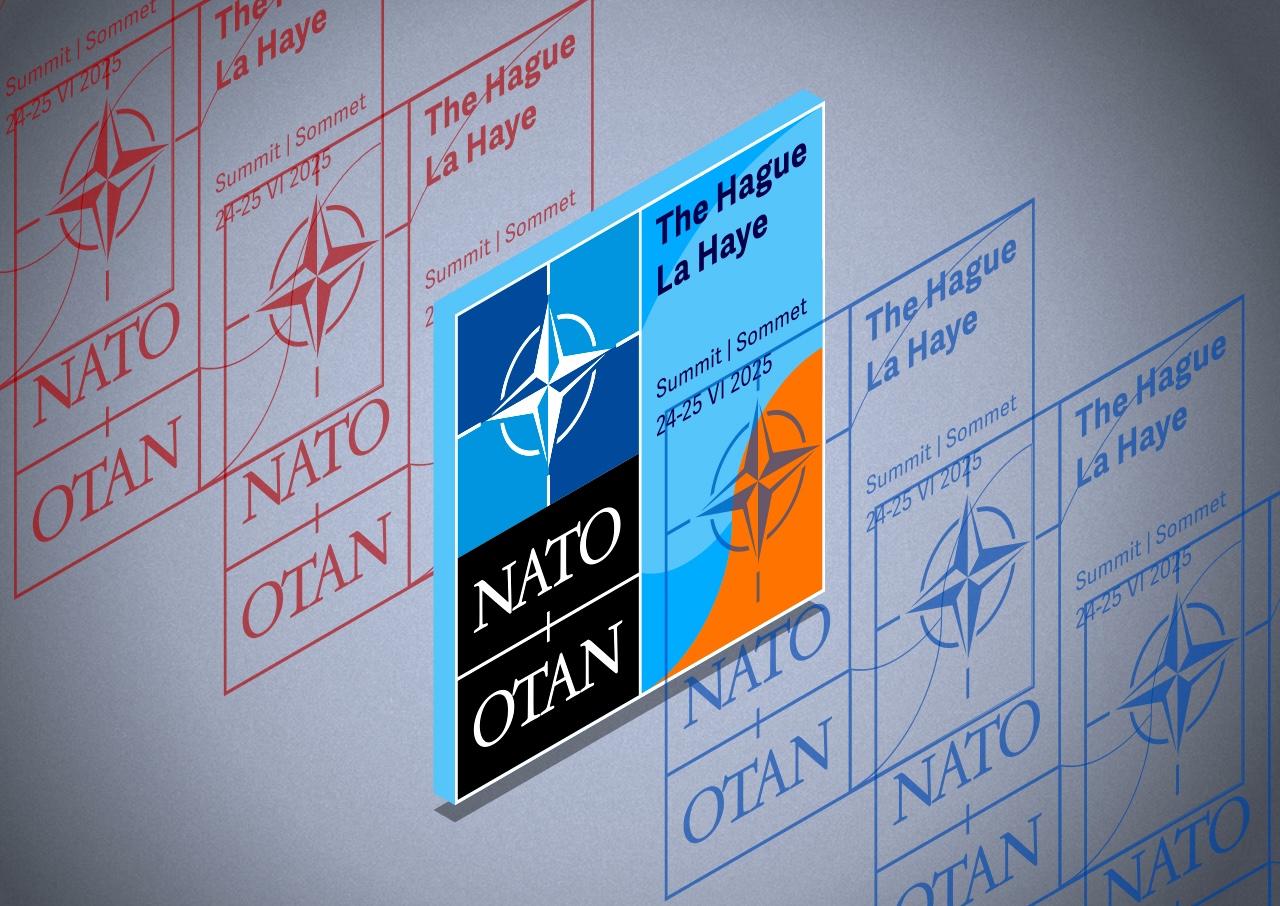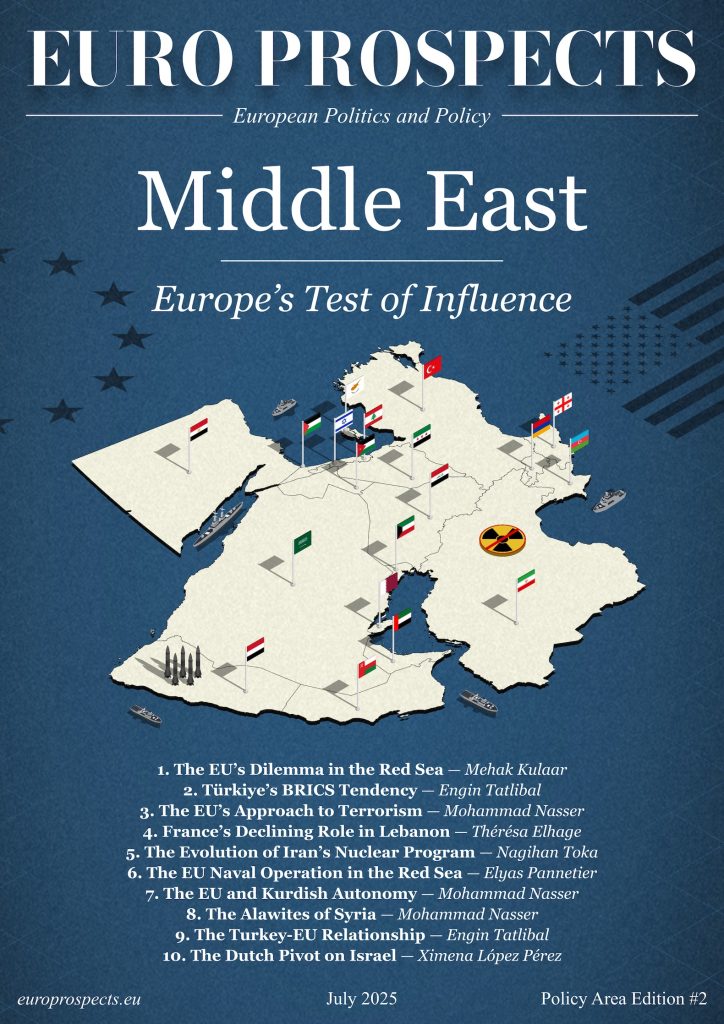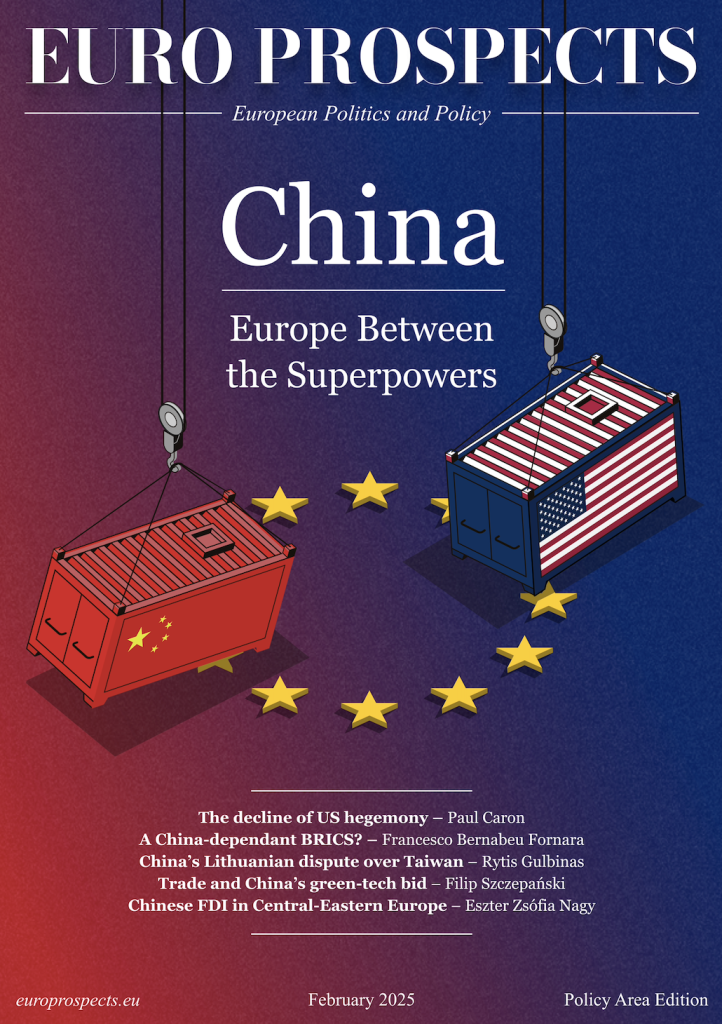
12 min read — Media | NATO
The NATO Summit and the Contest for Media Narratives

Edited/Reviewed by: Francesco Bernabeu Fornara
July 26, 2025 | 12:00
The NATO Summit, convened in the Hague in June 2025, symbolised a cornerstone to the future development of transatlantic security policy as member states agreed on 5%-of-GDP military budgets by 2035. Against a backdrop of heightened debate over defence spending, Ukraine’s military resilience, fierce domestic politics across the alliance, and the evolving question of European strategic autonomy, the meeting drew extensive scrutiny from both traditional and digital media. Yet beyond the policy deliberations, it was the public spectacle – notably fuelled by renewed attacks from U.S. President Donald Trump on domestic media outlets – that seemed to dominate headlines and online discourse.
This article examines how the NATO Summit was represented across traditional and social media platforms, highlighting the divergence between U.S. and EU media ecosystems – and its implications for alliance coherence. In doing so, we situate the summit within broader trends of media fragmentation, personality–driven diplomacy, and digital disinformation.
Media Narratives: From Policy Disputes to Personality Conflict
Traditional media coverage of the NATO Summit revealed pronounced differences between the U.S. and Europe. In the U.S., major networks including CNN, Fox News, and MSNBC concentrated on the escalating confrontation between President Trump and leading media outlets. Trump publicly accused CNN and The New York Times of and threatened to sue the outlets for delivering so-called ‘dishonest reporting’ on the U.S.’ negotiating stance and its commitment to the alliance, a narrative readily echoed by conservative–leaning platforms. Indeed, the US’ media polarisation seemed to be on full display, with the Summit’s substantive policy outcomes either sidelined or related specifically to Trump’s actions as a personality.
Several media outlets highlighted the diplomatic implications of former President Trump’s remarks, particularly regarding potential strains on NATO unity. In response to NATO Secretary General Mark Rutte’s adamancy that Trump deserves ‘all the praise’ for NATO agreeing to spend more, the
New York Times’ interviewer, Lulu Garcia-Navarro, narrowed on the personality-driven diplomacy. According to her, many argue that Rutte praised the President to ‘pacify President Trump’s ego’ but that the flattery ‘only appeases him for so long’.
This emphasis on personality–driven conflict at the expense of substantive policy discussions reflects Entman’s (1993) theory of media framing, wherein particular aspects of complex events are selectively emphasised to advance specific interpretations. In this case, much of the American media framed the summit as a proxy struggle between Trump, the press, and NATO’s Mark Rutte, overshadowing critical debates concerning alliance modernisation, defence spending, and European security strategy. It stood in stark contrast to the 2024 Washington Summit, where while doubt on Biden’s cognitive condition was also a headline, policy on Ukraine and electoral resilience of the alliance’s coherence was arguably far more salient.
European media, by contrast, largely prioritised the substantive policy outcomes of the Summit in The Hague. Publications such as Le Monde, Der Spiegel, Politiken, and Deutsche Welle offered in-depth reporting on key developments, including the newly endorsed target for NATO members to allocate 5% of GDP to defence and the formation of the Weimar+ coalition between Germany, France, and Poland. Coverage also focused on NATO’s collective strategy towards Ukraine and the broader debates surrounding European defence integration. Rather than centering on personalities or political spectacle, much of the European press framed the summit as a turning point for long-term strategic alignment within the alliance, reflecting a media landscape more attuned to policy substance than to partisan narratives.
Social Media Dynamics: A Contest of Frames and Echo Chambers
With the rising prevalence of alternative and social media within news discourse, the media environment surrounding the 2025 NATO Summit cannot be narrowed to traditional established media. These newer platforms to reporting not only amplified traditional media narratives but actively shaped and contested their meanings, as individual users, political influencers, and official institutional accounts advanced competing frames in real time. Interpreting this emerging media source through the framework of Entman’s (1993) framing theory one can see that, in the US’ context, right–wing digital communities promoted narratives depicting President Trump as a defender of national sovereignty and a critic of what they characterised as biased, ‘legacy’ media.
Hashtags such as #Sellout, #MAGA, #FakeNews, and #AmericaFirst proliferated across X, Trump’s own Truth Social, and other conservative-prone platforms. These narratives were reinforced by echo chamber effects (Cinelli et al., 2021), limiting audiences’ exposure to alternative interpretations and intensifying partisan divides. In contrast, European social media activity concentrated on the summit’s substantive policy outcomes. Hashtags including #NATO2025, #NATOSummit, #Weimar+, and #Ukraine gained prominence, especially in Germany, France,
Poland, and the Nordic states. Whether or not individuals agreed with it, it was the substantive policy outcomes that were hotly debated on media platforms – not so much the coverage itself. Topics including debates on the risk of welfare reduction as a consequence of increasing military spending and Spain’s unique unease with the 5% spending target clouded discourse, for example.
The discourse was influenced by messaging from NATO-affiliated accounts, government representatives, and defence policy analysts emphasising unity, strategic modernisation, and increased defence spending. This perspective was reflected in coverage across many mainstream European media outlets, though it faced opposition from populist and far-left groups critical of NATO’s role and military expansion. Differences in transatlantic media coverage were more a matter of emphasis than of fundamental positions: European media generally concentrated on policy implications and long-term strategy, while U.S. outlets more frequently highlighted political personalities and electoral dynamics, with exceptions present in both contexts.
A notable aspect of the transatlantic media coverage was the differing portrayals of former President Donald Trump. European media outlets frequently emphasised criticism of Trump’s confrontational style and scepticism towards multilateral institutions, highlighting concerns that his rhetoric and actions distracted from substantive diplomatic efforts. In contrast, many US media sources often framed Trump’s approach within the context of domestic political dynamics, focusing on his electoral strategy and appeal to certain voter bases. This divergence in emphasis reflects broader differences in media priorities on either side of the Atlantic, underscoring the challenges of achieving a unified narrative amid complex geopolitical and information environments.
Narrative Fragmentation as a Strategic Challenge
The 2025 NATO Summit demonstrated the impact of fragmented media ecosystems on the conduct of international diplomacy. Divergent narratives in the U.S. and European media – emphasising domestic political dynamics and alliance policy respectively – are further exacerbated by the polarisation and dissemination characteristic of social media platforms. This fragmentation impedes NATO’s capacity to articulate a cohesive strategic message, presenting not merely a communication challenge but a profound structural vulnerability that risks undermining alliance unity and effectiveness in critical situations.
Moreover, competing public narratives risk undermining the mutual understanding and legitimacy essential for effective multilateral cooperation. In an era where information spaces are increasingly weaponised, NATO’s long–term cohesion may depend as much on its capacity to manage contested digital narratives as on its military and diplomatic capabilities. The summit also highlighted the urgent need to strengthen public resilience against manipulative and polarising media content. A coordinated transatlantic media literacy initiative could play a critical role in countering the effects of echo chambers, disinformation campaigns, and personality-driven framing.
As NATO prepares to confront future crises, maintaining alliance unity will require not only skilful diplomacy but also the implementation of advanced strategic communication frameworks and rigorous information integrity protocols. To prevent fragmentation and enhance the alliance’s legitimacy, NATO could consider policies such as establishing a centralised communications task force to coordinate messaging, increasing transparency to build public trust, and investing in real-time misinformation monitoring and rapid response mechanisms.
The 2025 NATO Summit will be significant not solely for the policy decisions that were made but as a clear demonstration of the contested nature of global information politics. The battle for public perception is set to play an increasingly decisive role in shaping the legitimacy, credibility, and effectiveness of international diplomacy in the years ahead.
After the Summit: The Future of the NATO Alliance
The 2025 NATO Summit will likely shape the alliance’s future by solidifying a more assertive, policy–driven posture, particularly through its endorsement of a 5% GDP defence spending target. This signals a stronger European stake in transatlantic security and a partial shift toward strategic autonomy, especially in light of persistent U.S. political unpredictability. For Ukraine, the summit’s renewed military and political commitments reinforce NATO’s long–term support, though full membership remains deferred. The summit also marked a turning point in treating media and information environments as strategic domains, highlighting that future alliance cohesion will depend as much on managing narratives and public trust as on military deterrence.
The 2025 NATO Summit also demonstrated that media coverage – both traditional and digital, legacy and alternative – now plays a decisive role in shaping public opinions and legitimacy. The obvious difference between U.S. and European narratives, intensified by social media echo chambers, exposed a critical strategic vulnerability: information environments can either reinforce or erode collective security. This divergence between types of media speaks also to a growing trend of populism, mistrust in government and institutions, anti-establishment sentiment, and heightened legitimacy fragmentation. Going forward, NATO must treat strategic communication not as a support function but as a core element of alliance resilience. Indeed, from the latest presidential elections in Romania to the United States, the media is proving to be a make-or-break factor. The ability to manage contested narratives is no longer a matter of public relations – it is central to NATO’s credibility, deterrence, and long–term effectiveness.
Disclaimer: While Euro Prospects encourages open and free discourse, the opinions expressed in this article are those of the author(s) and do not necessarily reflect the official policy or views of Euro Prospects or its editorial board.
Write and publish your own article on Euro Prospects
Subscribe to our newsletter – stay informed when we publish articles on pressing European affairs.

